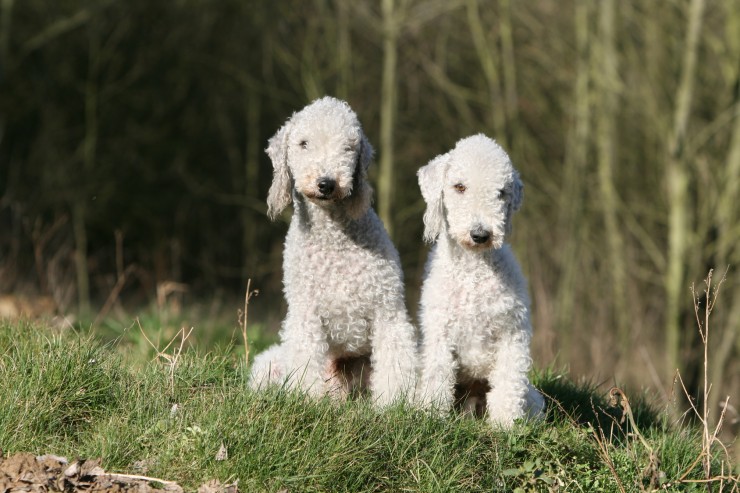

When your dog becomes sick or if you suspect that they may be becoming ill with something, the best and most obvious way to identify a problem is to establish what is different about your dog’s appearance, condition or behaviour. These types of changes are usually the first indication that something is amiss, and as the first stage of diagnosis, it is so obvious that this is the path to follow that it is often something that we do automatically without thinking about it.
Many elements of your dog’s normal appearance, health and condition can provide important clues, diagnostic tools and early warnings of any problems that may be developing, if you know how to spot them. In order to identify any changes from the norm, you will first need to be able to establish what the ‘norm’ is in regards to your dog, and this involves learning more about the usual parameters of their health and wellness, something that most of us take for granted on a day-by-day basis.
When you take your dog along to the vet for diagnosis or treatment of any suspected condition, your vet will perform a few simple checks on your dog, to identify any obvious indicators that something is out of balance or not quite right. These checks are second nature to vets and veterinary nurses, who are of course very familiar with the normal parameters of health and condition in dogs, and can make an assessment based on a simple check over to identify if something isn’t quite right.
For the everyday dog owner, however, these things are not so simple! Often, if you contact a vet or search online for possible symptoms that your dog is showing and that are giving you cause for concern, the first advice you will come to will run along the lines of “is your dog particularly pale?” and similar questions. Understandably, this kind of differential diagnosis process will stop many pet owners short, as they will not know how to look for signs of paleness in a fur-covered dog, nor know in the first instance what their dog’s normal skin colouration is anyway!
It is important to learn about some of the simple and yet highly effective indicators of normal health in your dog, so that you can spot and assess any changes quickly and accurately. Read on to learn more about identifying and assessing the normal parameters of health in your dog.
Your dog’s meals should be carefully portioned, and you should know on a daily basis how much food your dog consumes, so that you will notice if your dog is eating less than normal, or appears to be more hungry than usual. Measure out their meals so that you can make an informed assessment, rather than just pouring food into their bowls ad-hoc when they are hungry.
Ensure that your dog has access to clean, fresh water at all times, and that their bowls are kept clean and topped up. Try to get a feel for how much water your dog drinks on a daily basis, by assessing the level of water left in the bowl compared to the amounts you top it up by. Remember that your dog will drink more in the summer months, and that evaporation will play a part in the falling level of water in the bowl too!
You can judge your dog’s colouring by looking at their gums, the inside of the nostrils and the inside of the eyelids, searching for the pink areas of the mucous membranes. Look at these areas on a regular basis so that you can come to recognise the normal healthy pink shade that your dog’s mucous membranes display, and so that you will be able to judge by a simple inspection if your dog is paler or darker than normal.
The body temperature of the dog is one of the clearest indicators of health or illness, and the healthy dog will usually average between 38 and 39.2 degrees Celsius. The temperature of the dog unfortunately has to be taken rectally, which can take some practice for both dog and owner! Nevertheless, it is important to be able to take your dog’s temperature if necessary, in order to be able to spot any variations that may indicate a problem.
Your dog’s pulse rate will vary according to the breed, age and condition of your dog, and how active they are when you take their pulse. Always take the pulse rate of your dog when they are at rest but not sleeping, and not soon after exercise or other exertion. You may be able to feel the heartbeat itself within the chest, or with some practice, you may be able to find the palmer and planter pulses respectively in the front and rear limbs. This should give you a baseline of your dog’s normal pulse rate, in order to compare any deviations.
The respiration or breathing rate of your dog refers to how many breaths they take per minute. As with pulse rate, this should be taken when your dog is at rest and relaxed, but not asleep. Count the breaths per minute by watching or feeling for the rise and fall of the chest. Later signs of ill health to watch out for will include an elevated or reduced respiration rate, shallow breathing, or laboured breathing, all of which you will be able to spot with ease once you have become familiar with your dog’s normal breathing patterns. Remember that dogs will always breathe harder and pant during and after exercise!
Most of us avoid getting up close and personal with our dog’s poop as much as we can, but as all responsible dog owners will of course clear up after their dogs, sometimes this is unavoidable!
Use this opportunity to take a quick peek at your dog’s stools, and identify the normal colour and consistency of their poop. You will soon be able to spot if something changes!
Weigh your dog every couple of months, and keep an eye out for any significant changes in their weight. Trying to identify for sure if a dog has lost or gained weight can be difficult to do when you see them on a daily basis, and often, weight loss has to be quite pronounced before it becomes obvious to the regular caregiver or owner of a dog.
Make notes on your findings, and keep a list of the normal parameters that you identify within your dog. This will make it easy to refer back to if you need to make comparisons, and can prove a really useful diagnostic tool for your vet too if you can show them a record of your pet’s normal healthy parameters when you go in for a consultation.
Remember that as your dog ages and their activity levels and condition changes, the normal parameters of your dog’s health will change too. Repeat your baseline checks on a six monthly or annual basis, to ensure that you have accurate and up-to-date information about your dog’s normal health and condition to hand, when you need it.
 Pancreatitis In Cats
Pancreatitis In C
Pancreatitis In Cats
Pancreatitis In C
 Wooden Pet Urns- A Perfect Memorial
Wooden Pet Urns- A Perfect Memorial
The Array
Wooden Pet Urns- A Perfect Memorial
Wooden Pet Urns- A Perfect Memorial
The Array
 Copper Toxicosis In The Bedlington Terrier
Copper Toxicosis
Copper Toxicosis In The Bedlington Terrier
Copper Toxicosis
 Are You Inadvertently Sabotaging Your Dog’s Recall Reliability?
Are You Inadverte
Are You Inadvertently Sabotaging Your Dog’s Recall Reliability?
Are You Inadverte
 Dealing With A Dam That Becomes Aggressive After Delivery
Dealing With A Da
Dealing With A Dam That Becomes Aggressive After Delivery
Dealing With A Da
Copyright © 2005-2016 Pet Information All Rights Reserved
Contact us: www162date@outlook.com